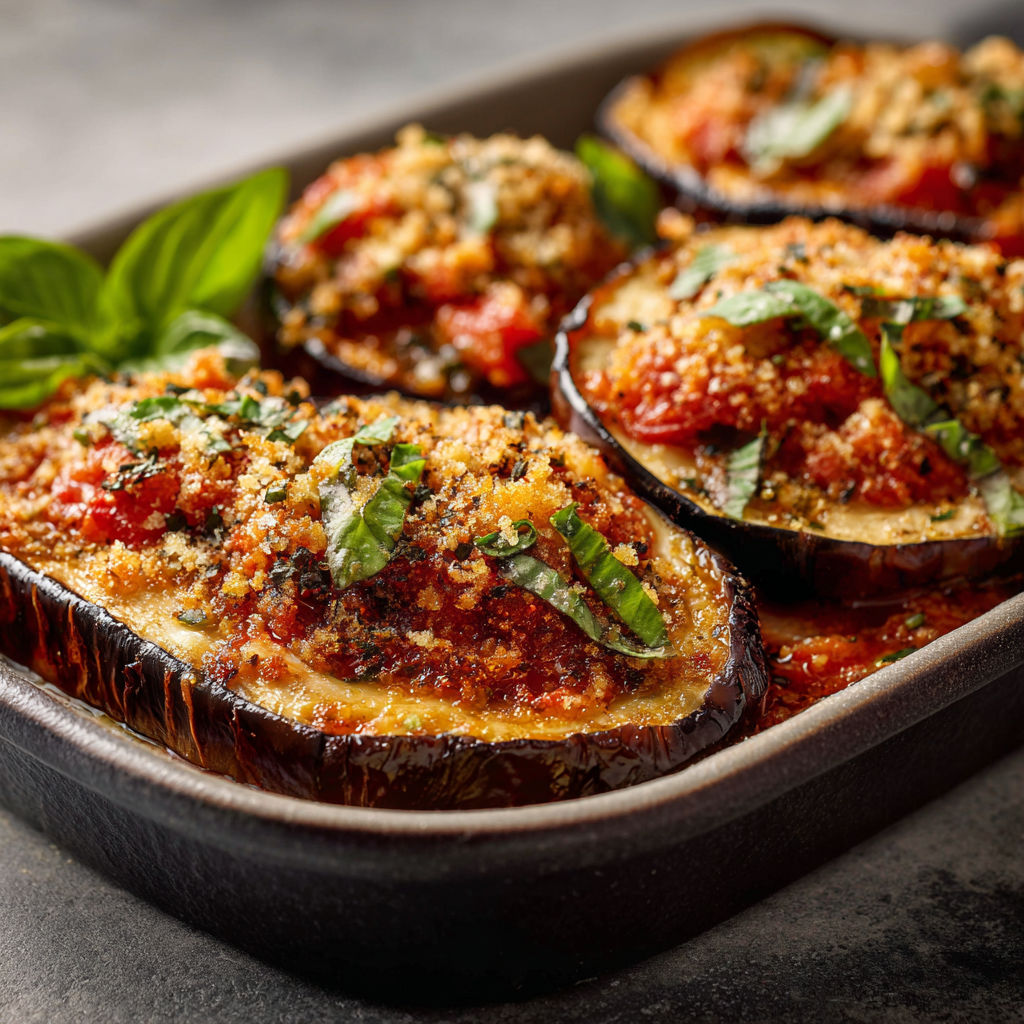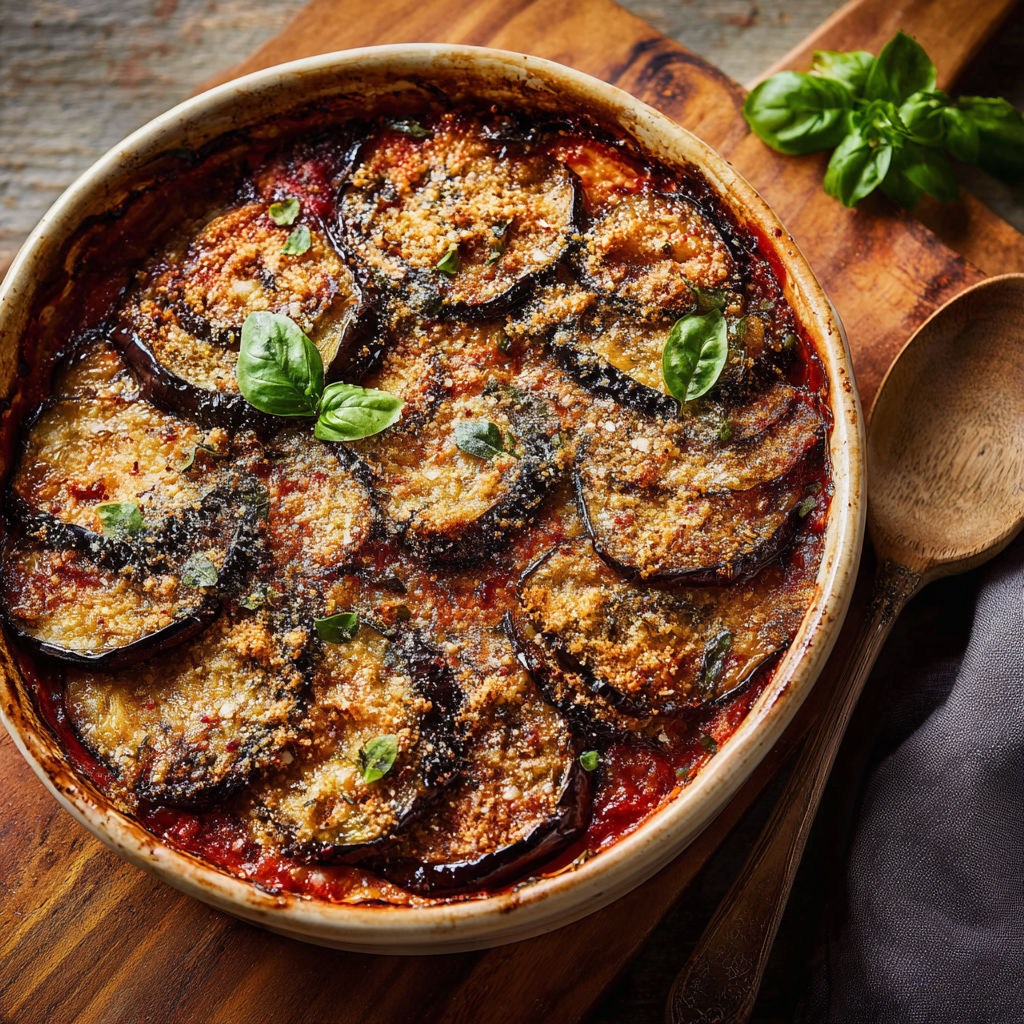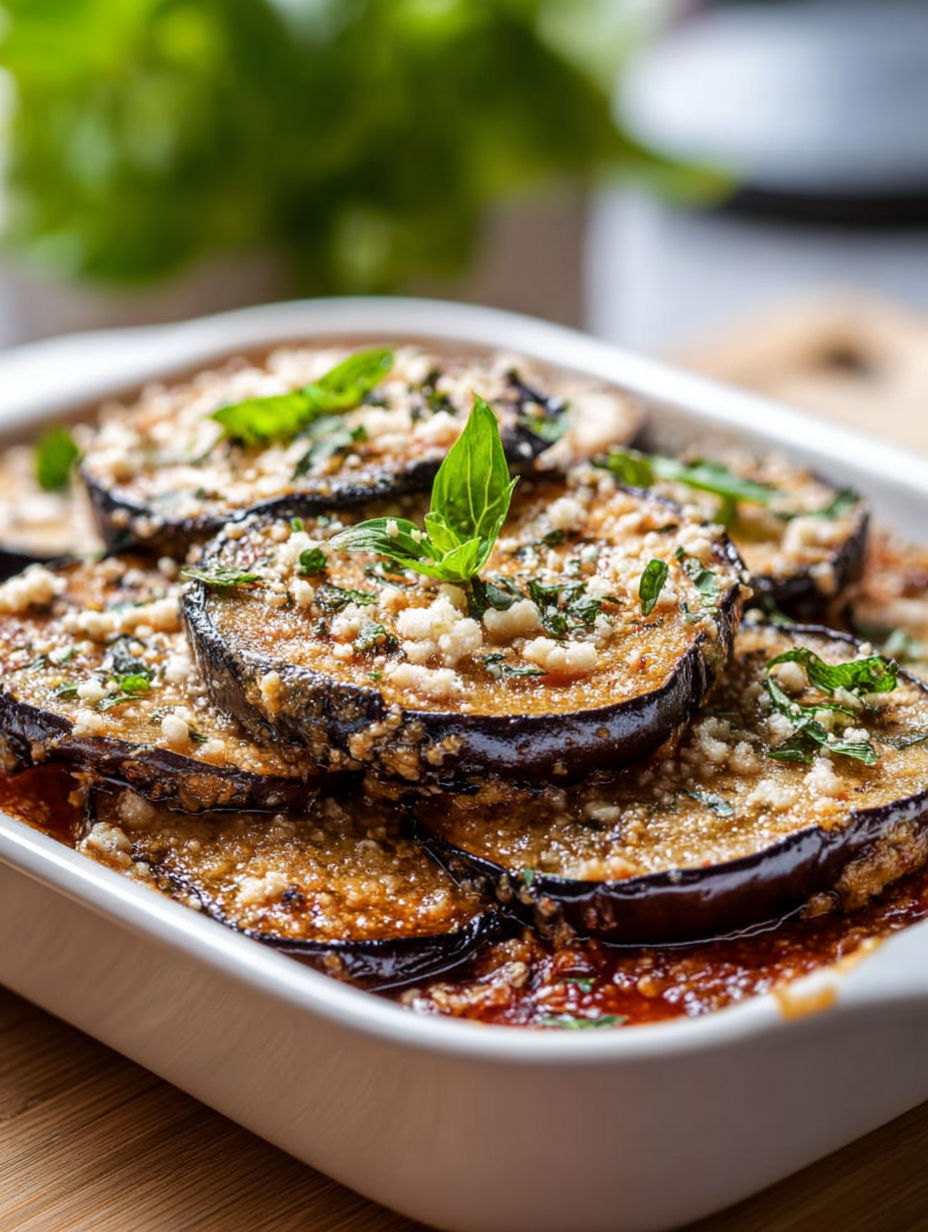 Pin
Pin
This rustic eggplant parmesan recipe has been in my family for generations, passed down from my Italian grandmother who brought it from her small village near Naples. The layers of tender eggplant, savory sausage, and caramelized onions create a depth of flavor that transports me back to Sunday dinners at Nonna's table.
I first learned to make this dish standing on a step stool in my grandmother's kitchen when I was just eight years old. She would let me sprinkle the cheese on top, and to this day, the smell of eggplant roasting in the oven brings back those precious memories.
- Eggplants choose firm ones with glossy skin and a slight heaviness for their size, indicating freshness
- Italian sausage the fat content adds incredible flavor, but you can use sweet or hot varieties depending on your preference
- White wine use a dry variety you would drink, as the flavor concentrates in cooking
- Onions thinly sliced and caramelized slowly, they become sweet and jammy, forming the backbone of this dish
- Tomato concentrate just a touch adds umami depth without making this a tomato-heavy dish
- Parmesan cheese splurge on authentic Parmigiano Reggiano and grate it yourself for the best flavor
- Breadcrumbs homemade from day-old bread will give the best texture, but good quality store-bought work well too
- Olive oil use a robust extra virgin olive oil for authentic Mediterranean flavor
How To Make My Italian Grandmother's Eggplant Parmesan
- Prepare the eggplants
- Slice eggplants into 1cm thick rounds. My grandmother never salted her eggplant to draw out moisture because she believed it washed away flavor. Instead, she roasted them with a generous drizzle of olive oil until they developed a beautiful caramelization. The high heat cooking eliminates any potential bitterness.
- Season and bake eggplant slices
- Arrange them in a single layer on parchment paper, being careful not to overcrowd the pan. The parchment prevents sticking without additional oil. Brush both sides with olive oil using a pastry brush to ensure even coverage. Season with salt and pepper, then bake until they're tender when pierced with a fork but not mushy.
- Prepare the filling
- While the eggplants roast, start the filling in a heavy-bottomed pan. The slow cooking of onions is crucial here. My grandmother would always say "Patience makes perfect onions." Use medium heat to allow the natural sugars to develop without burning.
- Brown the onions
- This step cannot be rushed. The onions should gradually turn golden brown, releasing their natural sweetness. Stir occasionally but not constantly to allow caramelization to develop. If they start to stick, add a tablespoon of water rather than more oil.
- Add the sausage
- Break the sausage into small chunks with your fingers before adding to the pan. Then use a wooden spoon to break it into even smaller pieces as it cooks. This ensures the sausage flavor distributes throughout the filling without overwhelming bites of meat.
- Deglaze with wine
- This step releases all the flavorful browned bits from the bottom of the pan. Make sure to scrape thoroughly with a wooden spoon. The alcohol cooks off leaving just the flavor essence behind. The wine should bubble vigorously as it reduces.
- Finish the filling
- The tomato concentrate adds depth without making this a saucy dish. It needs to cook briefly to remove any tinny flavor. Adding parsley at the end preserves its fresh flavor and bright color. Taste and adjust seasoning before assembling.
- Assemble the dish
- Use a round terracotta or ceramic baking dish if possible as my grandmother believed it created the most even heat distribution. Start with a single layer of eggplant slices, slightly overlapping them to create a solid base that will hold the filling.
- Continue layering
- Think of building flavors with each layer. The middle layer of eggplant should be particularly sturdy as it supports the weight of the top layers. Press down gently after adding each layer to compact the dish slightly.
- Prepare the topping
- The breadcrumb mixture should have just enough olive oil to moisten it without making it greasy. When properly mixed, it should clump slightly when pressed between your fingers. This creates the perfect crispy topping.
- Add the topping
- Distribute the topping evenly, making sure to cover the entire surface. Press it down very lightly to adhere to the eggplant layer beneath. The edges of the dish often brown faster, so make the topping slightly thicker in the center.
- Bake to perfection
- Watch the dish carefully during the final baking. The topping should become golden brown but not burnt. If needed, cover loosely with foil if browning too quickly. The internal temperature should reach about 160°F (71°C) for food safety.
My grandmother always insisted on using eggplant that was in season, saying "Cook with what the earth gives you now." She would wait all year for late summer when eggplants were at their peak sweetness and the local farmers would bring their best produce to the village market. This dish was her way of celebrating the harvest.
Storage Tips
This eggplant parmesan keeps beautifully in the refrigerator for up to 4 days. Store it covered with aluminum foil rather than plastic wrap to prevent condensation from making the topping soggy. To reheat, place in a 325°F (160°C) oven for about 15-20 minutes until warmed through. Avoid microwaving if possible as it can make the eggplant rubbery and the topping lose its crispness.

Make Ahead Options
For busy weeknights, you can prepare components separately in advance. Roast the eggplant and prepare the filling up to two days ahead, storing them separately in the refrigerator. The breadcrumb topping can be mixed a day ahead and kept in an airtight container at room temperature. Assemble just before baking, though you may need to add 5-10 minutes to the baking time if assembling with cold ingredients.
Serving Suggestions
My grandmother always served this eggplant dish as a hearty first course before a simple roasted chicken or meat. For a complete meal, pair it with a crisp green salad dressed with lemon and olive oil to cut through the richness. A glass of medium-bodied red wine like Chianti Classico or Montepulciano complements the savory flavors beautifully. For a touch of brightness, serve with lemon wedges on the side that guests can squeeze over their portion if desired.

Recipe FAQs
- → Can I make this dish ahead of time?
Yes, you can assemble the entire dish up to 24 hours ahead and refrigerate it covered. When ready to serve, let it sit at room temperature for 30 minutes before baking. You may need to add 5-10 minutes to the baking time if starting from cold.
- → Can I substitute the Italian sausage?
Absolutely! Ground beef, turkey, or plant-based meat alternatives work well. For a vegetarian version, use sautéed mushrooms with a pinch of fennel seeds to mimic the sausage flavor. Adjust seasonings accordingly as sausage provides significant flavor.
- → Should I salt the eggplant before baking?
While this recipe doesn't call for salting (as baking removes bitterness), you can salt eggplant slices and let them sit for 30 minutes before patting dry if you prefer. This extra step can help draw out moisture and reduce any potential bitterness in older eggplants.
- → What sides pair well with this dish?
This hearty eggplant dish pairs beautifully with a simple green salad dressed with lemon and olive oil. Crusty Italian bread is perfect for soaking up the juices. For a complete meal, serve with roasted vegetables or a light tomato soup as a starter.
- → Can I freeze leftovers?
Yes, this dish freezes well. Cool completely, then portion into airtight containers. Freeze for up to 3 months. Thaw overnight in the refrigerator and reheat in a 350°F (175°C) oven for 20-25 minutes until heated through. The texture may change slightly but the flavor remains delicious.
- → What type of white wine works best?
A dry white wine like Pinot Grigio or Sauvignon Blanc works perfectly. The wine adds acidity and helps deglaze the pan, capturing all the flavorful browned bits. If you prefer not to use alcohol, substitute with chicken broth plus 1 teaspoon of lemon juice or white wine vinegar.
